
Categories:
The AR-15 rifle has become one of the most popular guns in the United States due to its versatility, reliability, and ease of use. Whether you are a seasoned shooter or new to the world of guns, it is essential to understand the importance of regular maintenance and cleaning for your AR-15. By properly maintaining your rifle, you can ensure its longevity and optimal performance.
The purpose of this guide is to provide you with essential tips and techniques for maintaining and cleaning your AR-15. We will walk you through step-by-step instructions on disassembling and reassembling your rifle, as well as offer advice on selecting the right cleaning tools and lubricants.
Regular maintenance not only enhances the lifespan of your gun but also ensures its safe operation. Neglecting proper cleaning can lead to malfunctions, decreased accuracy, or even catastrophic failures. Additionally, environmental factors such as dust, moisture, or debris can accumulate over time inside your rifle’s components if not adequately cleaned.
Proper maintenance also allows you to inspect key parts for wear or damage that may require repair or replacement. By identifying potential issues early on, you can prevent costly repairs down the line.
Whether you are a recreational shooter or rely on your AR-15 for self-defense purposes, investing time in learning how to effectively maintain and clean your gun is crucial. This guide aims to equip you with all the necessary knowledge so that you can confidently preserve the performance and longevity of your prized AR-15 rifle.
Regular maintenance and cleaning are crucial for ensuring the longevity and optimal performance of your AR-15 rifle. The AR-15 is a highly reliable gun, but like any mechanical device, it requires proper care to function flawlessly over time. Neglecting regular maintenance can lead to malfunctions, decreased accuracy, and even safety hazards. One key aspect of regular maintenance is preventing the build-up of fouling and debris.
During firing, carbon fouling accumulates within the barrel, chamber, bolt carrier group (BCG), and other critical parts of the rifle. Over time, this build-up can affect reliability by causing failures to extract or feed properly. It may also impact accuracy due to increased friction between moving parts. Regular cleaning removes these deposits and helps maintain smooth operation. Another important reason for regular maintenance is preserving accuracy.
Dust, dirt, or debris that enters the rifle can settle on components like the trigger mechanism or barrel crown. Such contaminants can affect trigger pull weight or disrupt bullet flight path, thereby diminishing accuracy. Consistently cleaning and inspecting these areas ensures that they remain free from obstructions. Furthermore, regular maintenance allows you to identify potential issues before they become significant problems.
By thoroughly inspecting your AR-15 during cleaning sessions, you can detect signs of wear or damage on components such as springs, gas rings, or extractor teeth. Timely replacement of worn parts prevents catastrophic failures that may render your gun inoperable when you need it most.
Proper maintenance and cleaning are crucial to ensuring the longevity and optimal performance of your AR-15 rifle. To effectively clean your gun, you will need a set of essential tools that will aid in the process. These tools not only simplify the cleaning procedure but also help prevent damage to critical components. Here are some indispensable tools you should have on hand:
1. Bore Brush: A bore brush is designed to remove fouling and debris from the barrel of your AR-15. Choose a brush specifically designed for .223/5.56mm caliber rifles. 2. Cleaning Rod: A high-quality cleaning rod is necessary to guide the bore brush through the barrel, allowing you to effectively scrub away residue. 3. Patch Holder and Patches: Use a patch holder that fits securely onto your cleaning rod, ensuring proper contact with the barrel’s surface when applying solvent or oil-soaked patches.
4. Solvent: Invest in a reliable gun solvent or cleaner specially formulated for removing carbon buildup, copper fouling, and other deposits from your rifle’s internals. 5. Lubricant: Applying a suitable lubricant after cleaning helps reduce friction between moving parts, preventing wear and tear while ensuring smooth operation. 6. Toothbrush or Small Brush: A toothbrush or small brush can be used to reach into tight corners and crevices where dirt can accumulate.
7. Microfiber Cloth: Use a soft microfiber cloth to wipe down external surfaces and remove excess oil or solvent residue without scratching or damaging the finish.
Disassembling your AR-15 for maintenance and cleaning is an essential step in ensuring its longevity and optimal performance. While the process may seem daunting at first, following a step-by-step guide can simplify the task. Here’s a detailed breakdown of how to disassemble your AR-15:
1. Ensure gun safety: Before starting any disassembly, remember to remove the magazine, check the chamber for ammunition, and engage the safety. 2. Separate upper and lower receivers: Push out the rear takedown pin located above the pistol grip until it pivots open, allowing you to separate the upper receiver from the lower receiver. 3. Remove bolt carrier group (BCG): Pull back on the charging handle to expose the BCG within the upper receiver.
Push out the front takedown pin located above the magazine well, then gently pull forward on both halves of your rifle to separate them. 4. Disassemble BCG: Remove firing pin retaining pin by pushing it from left to right using a small punch or similar tool. Slide out firing pin and its spring, followed by removing cam pin from bolt carrier key.
5. Break down lower receiver: Remove buffer tube castle nut using an armorer’s wrench or spanner wrench and unscrew buffer tube assembly counterclockwise until it detaches from lower receiver. 6. Clean each component thoroughly: Once disassembled, clean all parts using appropriate solvents and brushes designed for guns maintenance.
When it comes to maintaining an AR-15 rifle for longevity, it is crucial to understand the proper cleaning techniques for each component. By adhering to these techniques, you can ensure that your gun remains in optimal condition and functions reliably. Here are some essential tips:
1. Upper Receiver: Start by removing the bolt carrier group (BCG) and charging handle. Use a bore brush and solvent to clean the chamber thoroughly. Pay close attention to the gas port area, as carbon buildup can impede functionality. 2. Barrel: Clean the barrel using a bore brush soaked in solvent, following the direction of bullet travel (from chamber to muzzle).
Avoid excessive scrubbing, as it may damage the rifling. Use cleaning patches or a bore snake soaked in solvent for additional cleaning. 3. Bolt Carrier Group (BCG): Disassemble the BCG and clean each part individually using a solvent-soaked brush or cloth. Remove any carbon buildup from the bolt, firing pin, cam pin, and extractor using appropriate tools. 4. Lower Receiver: Wipe down the lower receiver with a cloth dampened with solvent or gun cleaner.
Pay attention to areas where dirt and debris tend to accumulate, such as around pins and springs. 5. Small Parts: Clean small parts like pins, springs, and detents by soaking them in a container filled with solvent or gun cleaner. Use a small brush to remove any residue before drying them thoroughly. 6.
Proper lubrication plays a vital role in maintaining the longevity and performance of your AR-15 rifle. Choosing the right products and applying them correctly can significantly enhance its reliability and functionality. Here are some essential tips for effective lubrication. Firstly, it is crucial to select a high-quality lubricant specifically designed for guns. Look for a product that offers excellent corrosion protection, high viscosity, and long-lasting performance.
Many reputable gun lubricants are available in the market, such as CLP (Cleaner-Lubricant-Protectant) oils or synthetic options like Froglube or Slip 2000 EWL. When applying the lubricant, always remember that a little goes a long way. Excessive amounts of oil can attract dirt, dust, and debris which may hinder your AR-15’s functioning. Focus on key areas such as the bolt carrier group (BCG), buffer assembly, trigger components, and other moving parts prone to friction.
Ensure thorough coverage by using an applicator or brush to reach into hard-to-reach areas. Pay special attention to contact points where metal rubs against metal, as these areas are prone to wear over time. Regular maintenance is essential for preserving your AR-15’s longevity. Develop a cleaning schedule based on your gun usage; monthly cleanings are typically sufficient for most shooters but adjust accordingly if you engage in heavy shooting or adverse environmental conditions.
After thoroughly cleaning your AR-15, it is crucial to inspect and reassemble the rifle properly to ensure its longevity. Here are some essential tips for inspecting and reassembling your AR-15:
1. Check for any visible damage or wear: Carefully examine all components of your AR-15, including the upper and lower receivers, barrel, bolt carrier group, trigger assembly, and magazine. Look for signs of cracks, corrosion, or excessive wear that may compromise the rifle’s performance or safety. 2. Lubricate moving parts: Apply a thin layer of high-quality gun lubricant to all moving parts such as the bolt carrier group, charging handle, and trigger assembly.
Proper lubrication ensures smooth operation and prevents excessive friction that can lead to premature wear. 3. Align upper and lower receivers: When reassembling your AR-15, ensure proper alignment between the upper and lower receivers before closing them together. Misalignment can cause feeding issues or affect accuracy. 4. Secure all pins and screws: Double-check that all pins (such as pivot pin, takedown pin) are fully inserted into their respective holes and securely fastened.
Tighten any loose screws to prevent rattling during use. 5. Function test: Before considering your AR-15 ready for use again, perform a function test by manually cycling the bolt carrier group several times while checking for smooth operation without any binding or abnormal noises. 6.
Proper maintenance and cleaning are crucial for the longevity of your AR-15 rifle. However, there are some additional tips that can help you further extend its lifespan and ensure optimal performance. Firstly, consider investing in high-quality ammunition. Cheaper or low-quality ammunition may not only affect accuracy but also lead to increased wear and tear on your gun. Quality ammunition with consistent loads can reduce stress on critical components, minimizing the risk of malfunctions and increasing the overall longevity of your rifle.
Another important aspect to consider is lubrication. While regular cleaning is necessary, applying an appropriate lubricant to moving parts can significantly reduce friction and prevent excessive wear. Be sure to use a lubricant specifically designed for guns as other oils or greases may not provide adequate protection or could attract dirt and debris. Furthermore, it is essential to handle your AR-15 with care during disassembly and reassembly.
Avoid using excessive force when removing pins or manipulating small parts as this can cause damage or misalignment. Take your time to understand the proper procedures outlined in the manufacturer’s manual, ensuring all components are correctly aligned before reassembling. Additionally, storing your AR-15 properly plays a vital role in maintaining its longevity. Ideally, store it in a cool, dry place away from extreme temperatures or humidity that could promote corrosion.
Consider using a gun safe or case that provides protection from dust, moisture, and potential physical damage.
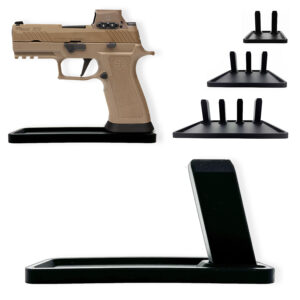

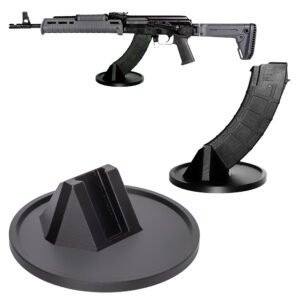

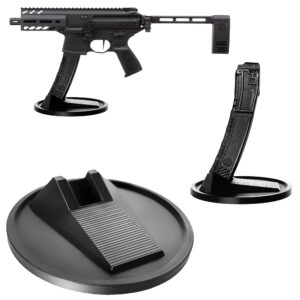
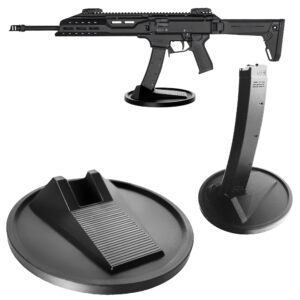

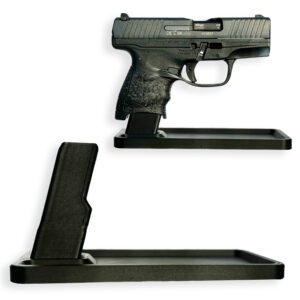
Colt
Colt M4 Carbine
Colt LE6920
Colt AR-15 A4
Daniel Defense
DDM4 V7
DDM4 V9
DDM4 V11
DDM4 ISR (Integrally Suppressed Rifle)
Smith & Wesson (S&W)
M&P15 Sport II
M&P15 Tactical
M&P15T
Bravo Company Manufacturing (BCM)
BCM Recce-16
BCM Recce-14
BCM MCMR Series
Aero Precision
M4E1 Series
AC-15
AR15 Pistol (Various Configurations)
Ruger
Ruger AR-556
Ruger SR-556
Ruger AR-556 MPR (Multi-Purpose Rifle)
Springfield Armory
Saint Victor
Saint Edge
Saint AR-15
PSA (Palmetto State Armory)
PSA PA-15
PSA AR-V
PSA Jakl (AR Pistol)
FN America
FN 15 Tactical Carbine
FN 15 Patrol
FN 15 DMR
Wilson Combat
Recon Tactical
Super Sniper
Protector Carbine
SIG Sauer
SIG M400 Tread
SIG M400 Elite
SIG M400 SDI
LWRC International
IC DI (Direct Impingement)
IC SPR
IC A5
Bushmaster Guns
XM-15 QRC
Bushmaster MOE
XM-15 Patrolman
Rock River Arms
LAR-15 Entry Tactical
LAR-15 Predator
LAR-15 Elite Comp
Stag Arms
Stag 15 Tactical
Stag 15L (Left-Handed Models)
Stag 15 Valkyrie
Noveske Rifleworks
Noveske Gen 4 N4
Noveske Space Invader (AR Pistol)
Noveske Recon
Anderson Manufacturing
AM-15 Optic Ready
AM-15 M4 Carbine
AM-15 Precision Rifle
Adams Arms
AA-15 Piston Rifle
P2 AARS (Adams Arms Rifle Series)
Black Rain Ordnance
SPEC15 Series
BRO Predator
Fallout 15
Diamondback Guns
DB15 Series
DB15CCMLB
DB15EB
Del-Ton Inc.
DTI-15
Del-Ton Echo 316H
Sierra 316M
Windham Weaponry
Windham SRC
Windham VEX-SS
Windham RMCS-4 (Caliber Conversion System)
Christensen Arms
CA-15 G2
CA-15 Recon
CA-15 Titanium Edition
Patriot Ordnance Factory (POF-USA)
Renegade Plus
P415 Edge
Revolution DI
LaRue Tactical
PredatAR
OBR (Optimized Battle Rifle)
LaRue Stealth 2.0
Battle Arms Development
Workhorse Patrol Carbine
BAD556-LW (Lightweight)
Authority Elite Rifle
Faxon Guns
Ascent AR-15
FX-19 (AR Pistol)
Streamline Ultralight Series
KE Arms
KE-15 SLT (Super Lightweight Tactical)
KE-15 Scout Carbine
Primary Weapons Systems (PWS)
MK1 MOD 2-M
MK116 PRO
MK107 (Piston AR Pistol)
ZEV Technologies
ZEV Core Elite Rifle
ZEV AR15 Billet Rifles
Franklin Armory
BFSIII AR-C1
Militia Model
F17-L (Chambered in .17 WSM)
Seekins Precision
SP15 DMR
NX15 Skeletonized Rifle
Havak Bravo
Aero Precision (Additional Models)
EPC-9 (Pistol Caliber ARs)
VG6 AR Rifles
Barrett Guns
REC7 DI
REC7 Gen II
CMMG
MK4 RCE
Resolute 300
Banshee (AR Pistol)
DPMS Panther Arms
Panther Oracle
Panther LR-308
H&K (Heckler & Koch)
HK MR556A1
HK416 (Military Variant)
Rock Island Armory (Armscor)
VR-80 Tactical AR (Shotgun AR Platform)
Troy Industries
Troy SPC-A3
Troy PAR (Pump Action AR)
Wilson Tactical
Tactical Recon AR
Protector Series
F1 Guns
FDR-15 Skeletonized Rifle
BDRx-15 Series
Juggernaut Tactical
JT-15
JT-10 Precision Rifle
AeroSurplus
Surplus AR-15 Rifles (Budget Models)
Thunder Tactical
AR-15 Basic Carbine
Tactical Builder Sets
Radical Guns
RF-15
Forged AR-Series
Dark Storm Industries
DS-15 Featureless Rifles
DS-10 Typhoon
DRD Tactical
Paratus
Aptus AR Rifles
Bear Creek Arsenal
BCA-15
AR Complete Upper Builds
Aero Survival Rifles (ASI)
ASR Tactical Series
Tactical Edge
WARFIGHTER Series
AR-15 Lightweight Rifles
Lone Star Armory
TX15 DMR
TX15 Carbine
HERA Arms
HERA H7
HERA AR-15 Lower Builds
IWI (Israeli Weapon Industries)
Zion-15
DRD Tactical
Tactical Modular Rifles
Quick-Takedown Rifles
V Seven Weapons
1776 Rifle
Hyperlite Rifle
Core Rifle Systems
Core15 Tac III
Core15 Patrol Rifle
Armalite (Original AR-15 Creator)
M15 Tactical
M15 A4 Carbine
DEF15 (Defensive Sporting Rifle Series)
PSA (Palmetto State Armory Additional Models)
PSAK-47 Hybrid (AR-AK Style Hybrid)
PSA Dagger (Pistol Caliber Configurations)
Odin Works
OTR-15
Odin Recon Rifle
Maxim Defense
MDX-508 PDX (Compact AR Pistol)
MDX-510 Rifle